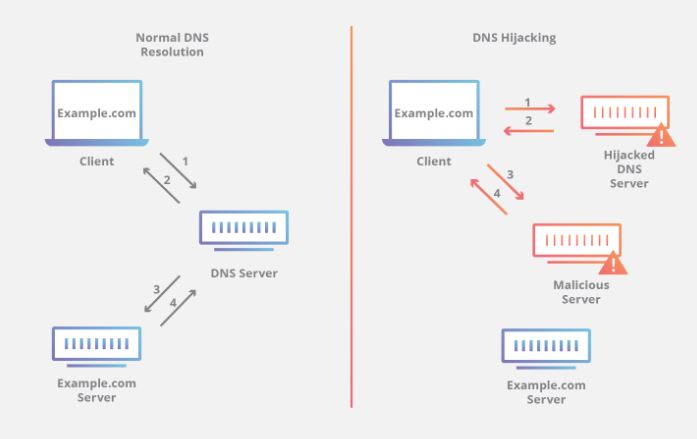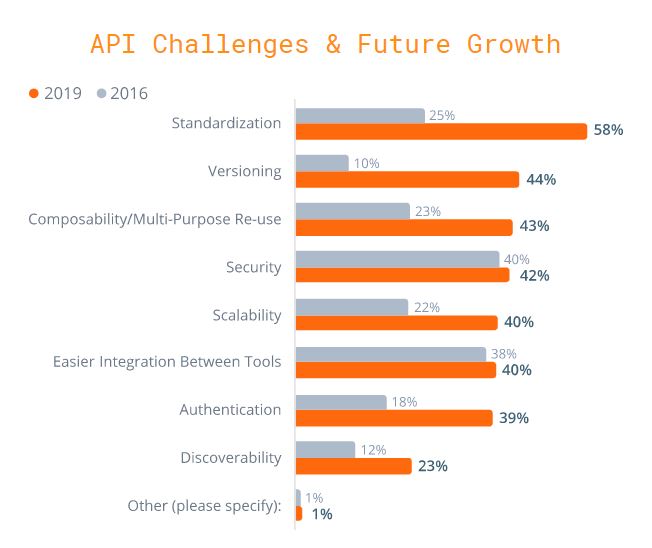The current age is the age of science and technology. With the advent of modern technology, the problems associated with modern technology have also increased to a great level.
Application programming interfaces (APIs) have become all the rage nowadays, with enterprise developers now relying heavily on them to support the delivery of new products and services. With the number of APIs increasing, so increasing the data which is passed on the network.
Some of that data is sensitive data like user details, emails, passwords. Consider facebook API which gives you access to many user details including photos, locations and more. This data can be used in many malicious ways, that's why we must focus on security and especially in building secured APs from the start.
API Security Is A Growing Concern
According to the recent researched done by SmartBear (research which was presented in their State of APIs report):
- According to 41.2%, people who gave a response to their research, security was the biggest API technology problems that they wanted to get rid of. They considered it a top priority and wanted foolproof security.
- According to the research, security will be #4 on the area that is expected to provide growth to the API field.
- More than 40% of API providers use some sort of a tool to have a look at the API security, and they want to see if there is a loophole or not.
As the world around us becomes more and more connected via internet connections, the need to build secure networks grows infinitely. APIs continue to be an integral business strategy across industries, whether they are REST, SOAP or ASYNC APIs.
The Internet of Things is another driving force behind the rapid growth in the development of new and smart APIs as these APIs act as an interface between smart devices and the Internet. The latest business trends incorporate the use of APIs, which was not seen before in some of the businesses earlier, such as:
- Banking institutions are incorporating the use of APIs for their clients for better service experience. Banks are adopting an API agile model for efficient and adaptable financial and secure architectures. Healthcare practitioners use various APIs for patients and clients to provide integrated healthcare services and allow interoperability across the organization.
- Retailers are using APIs for smarter e-commerce platforms for their customers, such as mobile payments, etc. Broadly speaking, three main types of APIs are available in practice:
Current State of API Security:
In today's age, a humongous and whopping amount of data is transferred on a daily basis. Some of the data that is transferred using APIs is not that important. On the other hand, some of the data that is shared via API is very confidential, and it must stay safe and encrypted. There are a lot of “Bad people “out there who are always looking for a loophole to jump in and know the secrets of different companies, firms and even reports of national interests. Due to all these reasons, the security of APIs is of a lot of importance, and security must be given the top priority in any scenario.
The modernizing of technology and the problems associated with security are going hand to hand. The stakeholders of the technology world are trying their level best to overcome this mountain like the task, and they want to get rid of security concerns as soon as possible.
Today, the security of APIs are more focused on:
- Authorization, Authentication, and Auditing (Access Control)
- Load Balancing and Rate Limiting
- Communication & Network Privacy (SSL/TLS)
Future of API Security:
In recent times, there are certain trends that API security is going to pass through. From what I can identify here are some of them:
1. DNS Security (DNSSEC)
Encryption goes hand in hand with an API design that grants access to your sensitive information. Since most of this information is transferred over wireless networks, it can be more vulnerable. It’s important to set up SSL or TLS connection to ensure the safety of your data in transit. Using SSL or TLS connection takes your security to another level.
Since standard DNS queries, which are required for almost all web traffic, create opportunities for DNS exploits such as DNS hijacking and man-in-the-middle attacks. These attacks can redirect a website’s inbound traffic to a fake copy of the site, collecting sensitive user information and exposing businesses to major liability.
Like many internet protocols, the DNS system was not designed with security in mind and contains several design limitations. These limitations, combined with advances in technology, have made it easy for attackers to hijack a DNS lookup for malicious purposes, such as sending a user to a fraudulent website that can distribute malware or collect personal information.
Let's take for example DNS hijacking:

The DNS Security Extensions (DNSSEC) is a security protocol created to mitigate this problem. DNSSEC protocol protects against attacks by digitally signing data to help ensure its validity. In order to ensure a secure lookup, the signing must happen at every level in the DNS lookup process.
2. API Design with Security Focus
The key to reaching API developers and users is to formulate a strategic iceberg model that unravels the ease of use and scalability of API design.
When you start to build a microservice that exposes API, start with the API design.
It’s highly recommended to focus on security in the API design process to obtain faster and better results, saving a lot of time and resources. RestCase platform is using AI and sophisticated algorithms in order to validate and inspect the APIs at the design phase and recommend how to handle the security aspects.
3. Artificial Intelligence-Driven API Security
The use of systematic prognostic APIs to integrate huge data, visual, spatial/ location, embedded, web, network, text, and mobile network data has developed to incorporate natural language processing particularly in context per Business Intelligence trends. New sources of real-time data can be useful to detect trends for faster responses to intelligence.
Deep Insight of API Traffic which leads to Trend Analysis, Historical Attack and Anomaly Detection can be used in order to prevent many attacks and do it in a very smart way.
For instance, API specific DoS originates from poorly designed APIs in which rate limiting is not enforced. Sometimes a few API endpoints are computationally heavy to run, such as authentication logic requiring a hashing algorithm. Attackers purposefully exploit and spam such endpoints and take down the entire system.
4. Machine Learning-Driven API Security
AI and ML are excellent tools for the development of such comprehensive and intelligent APIs and can be used to manage challenging and new emerging threat models. These include identifying and flagging anomalous behaviors and malicious data trends and identifying and blocking API attacks and abnormal behavior patterns under multiple environments and circumstances. As a result, continuous learning capabilities are added to the APIs, and anomalous behavior is flagged without prior knowledge of attacks and written policies.
Various machine learning algorithms such as Naive Bayes, K-Nearest Neighbors, Decision Tree, Random Forest, and Support Vector Machine, Deep Learning and Neural Networks are recommended and are being used widely for many API security aspects.
Summary
This era of modern technology is spreading vastly day by day and with the advent of modern technology, the problems have become even more complex, and the stakeholders of this generation are trying their level best to overcome them and facing them gallantly.
We can conveniently conclude that API security is the utmost need of today's cyber world and ML/AI are being used as an effective and smart tool for achieving API security at various layers of the protocol stack. However, more research and development efforts for AI-supported APIs are required, in terms of API business models, analytical and technical blueprints and above all compliance and standardization issues.
I recently had a really interesting interview at the SafetyDetectives blog about cybersecurity and API security state so you are welcome to read it as well.
